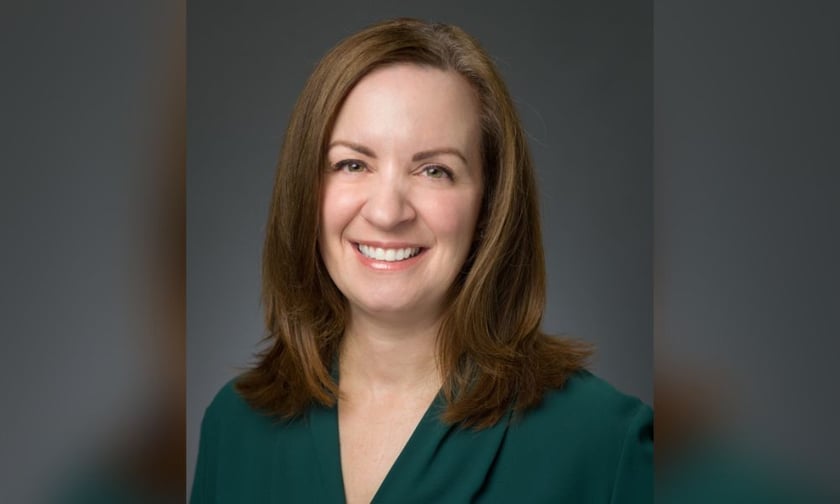

Relying on AI as a quick fix for the worker shortage is just putting a bandage on a bleeding wound. If everyone invests in AI, what sets one company apart? The boldness of the decisions its people make.
With a looming talent shortage and the rapid rise of AI, standing still isn’t an option. Experienced professionals are retiring, and by 2035, half of the workforce will be gone, leaving over 400,000 roles unfilled. While technology promises transformation, it’s the people who will make or break the industry’s future.
Krista Glenn (pictured), a more than 30-year veteran in claims and management, has seen the industry evolve and stall. From her time at AIG to leading multinational claims at ACE/Chubb, she’s been at the forefront of change. Now, as executive vice president and chief claims officer at Westfield Specialty, she’s leading efforts to build a full-service claims organization spanning multiple sectors. Glenn stressed the need for the industry to embrace calculated risks.
“We can’t afford to wait,” she said. “The future belongs to those willing to take strategic risks and invest in the next generation.”
Glenn will chair the Woman in Insurance Summit Atlanta on April 25. Register here to secure your spot and join the discussion.
And the issue isn’t just about underwriters. While underwriters play a crucial role, the talent shortage extends across multiple disciplines within insurance—claims, IT, risk management and operational support.
While AI and automation are accelerating change, they’re not solving the people problem. Without the right talent in place, technology is useless.
“We need to do more and better in our industry to attract talent that can be part of all these new things we see coming around technology, including AI, and things that are yet to come,” Glenn said.
But bringing in new talent isn’t just about filling roles—it’s about shifting the industry’s mindset. Insurance has long been defined by caution, but Glenn argued that avoiding risk isn’t the smartest strategy.
“Maybe the perception is that it's about caution, but I think what it really is, is about prioritizing appropriate risk-taking over caution necessarily,” she said.
She believes that playing it too safely is just as dangerous as making the wrong bet.
“We always need to do our homework. We need to cross those t’s and dot those i’s. We need to be confident that we've made the right decision so that we can take those bold, strategic moves that will keep driving us forward,” Glenn said.
Glenn believes the mindset of embracing calculated risks rather than fearing failure is exactly what insurance leaders need today.
“We can’t stay static; we have to keep driving forward. And sometimes we’re not going to get it right, and sometimes we’re going to fail, but we’re never going to do anything if we don’t try,” she said.
That same willingness to adapt is crucial as the industry faces rapid technological advancements. AI and Gen AI are on the verge of transforming insurance, but Glenn warned against assuming they are the biggest changes ahead.
“I think that AI and Gen AI are going to have a huge impact over the next five, 10 years and beyond, and I think that we’re just scratching the surface as to what those tools can do for us, how they can make us better, how they can make us more efficient,” she said. “The big thing that’s going to have the biggest impact on us is probably something none of us have even thought of.”
Insurance has always been an industry built on assessing risk. But predicting what’s coming? That’s another story.
“Ten years ago, were there many people talking about AI and Gen AI? No. So, would we have predicted it? Not the masses of us. Maybe there were people on the periphery that were, but not the people that are in the trenches every day,” Glenn said.
So how do you prepare for something you can’t see coming? Glenn’s answer: adaptability.
“To be open, to be aware, to stay engaged in what’s going on, and to look for those things that are on the horizon, that are coming towards us, so that we’re going towards them so that we can be ready for it,” she said.
And yet, the biggest roadblock isn’t technology—it’s resistance to change.
“Part of what I’ve seen, even with the AI and Gen AI space, is people being a little resistant to it because it’s new,” she said. “So, take the leap, take the risk, embrace the new, embrace the challenge.”
But adopting new technology isn’t just about efficiency—it’s about ensuring the industry can keep pace with growing complexity. Glenn rejects the idea that AI and automation will make insurance easier. The industry is getting more complex, not less, and employees need to be equipped to keep up.
“You have to make sure that your employees are prepared to use the tools that we have to make the complex easier – to streamline something over here, because they’re going to spend more time on something over there,” she said.
If insurance professionals aren’t trained to use the technology in front of them, the industry isn’t just standing still—it’s falling behind.
“You have to help the people that are in the industry to be ready for it and to adopt it and to be able to use what we put in front of them,” Glenn said.
